Science
The least of us : true tales of America and hope in the time of fentanyl and meth
Sam Quinones
362.293 /Quinones
History, Science
Quinones was among the first to see the dangers of synthetic drugs and a new generation of kingpins whose product could be made in Magic Bullet blenders. In fentanyl, traffickers landed a painkiller a hundred times more powerful than morphine. They laced it into cocaine, meth, and counterfeit pills to cause tens of thousands of deaths-- at the same time as Mexican traffickers made methamphetamine cheaper and more potent. He investigated these new threats, discovering how addiction is exacerbated by consumer-product corporations. Amid a landscape of despair, Quinones found hope in those embracing the forgotten and ignored, illuminating the striking truth that we are only as strong as our most vulnerable. -- adapted from jacket
The orphans of Davenport : eugenics, the Great Depression, and the war over children's intelligence
Marilyn Brookwood
305.231 /Brookwood
Nonfiction, History, Science
"The fascinating-and eerily timely-tale of the forgotten Depression-era psychologists who overthrew long-accepted racist and classist views of childhood development. "Doomed from birth" was how psychologist Harold Skeels described two toddler girls at the Orphans' Home in Davenport, Iowa, in 1934. Following prevailing eugenic beliefs, Skeels and his colleague Marie Skodak assumed that the girls had inherited their parents' low intelligence and sent them to an institution for the "feebleminded" to be cared for by "moron" women. To their astonishment, under the women's care, the children's IQ scores became normal. This revolutionary finding, replicated in eleven more "retarded" children, infuriated leading psychologists, all eugenicists unwilling to accept that nature and nurture work together to decide our fates. Recasting Skeels and his team as intrepid heroes, Marilyn Brookwood weaves years of prodigious archival research to show how after decades of backlash, the Iowans finally prevailed. In a dangerous time of revived white supremacy, The Orphans of Davenport is an essential account, confirmed today by neuroscience, of the power of the Iowans' scientific vision"--
It is fascinating. It is emotionally wrenching. It is an important story of how our community contributed to how we understand the human condition. -Anne M
Seek you : a journey through American loneliness
Kristen Radtke
155.92 Radtke
Science, Graphic Novels, Memoir
"When Kristen Radtke was in her twenties, she learned that, as her father was growing up, he would crawl onto his roof in rural Wisconsin and send signals out on his ham radio. Those CQ calls were his attempt to reach somebody--anybody--who would respond. In Seek You, Radtke uses this image as her jumping off point into a piercing exploration of loneliness and the ways in which we attempt to feel closer to one another. She looks at the very real current crisis of loneliness through the lenses of gender, violence, technology, and art. Ranging from the invention of the laugh-track to Instagram to Harry Harlow's experiments in which infant monkeys were given inanimate surrogate mothers, Radtke uncovers all she can about how we engage with friends, family, and strangers alike, and what happens--to us and to them--when we disengage."--
A great mixture of autobiographical and social science examination. I loved this unique graphic format and felt very relevant in the pandemic world with more isolation. -Mari
Classified : the secret career of Mary Golda Ross, Cherokee aerospace engineer
Traci Sorell
j629.1092 Ross
Kids, Picture Books, Nonfiction, Science
"Mary Golda Ross designed classified projects for Lockheed Air Corporation as the company's first female engineer. Find out how her passion for math and the Cherokee values she was raised with shaped her life and work"--
Cherokee author Traci Sorell and Métis illustrator Natasha Donovan trace Ross’s journey from being the only girl in a high school math class to becoming a teacher to pursuing an engineering degree, joining the top-secret Skunk Works division of Lockheed, and being a mentor for Native Americans and young women interested in engineering. In addition, the narrative highlights Cherokee values including education, working cooperatively, remaining humble, and helping ensure equal opportunity and education for all. Mary Golda Ross designed classified airplanes and spacecraft as Lockheed Aircraft Corporation’s first female engineer. Find out how her passion for math and the Cherokee values she was raised with shaped her life and work. -Angie
The snail with the right heart : a true story
Maria Popova
This is the real-life story of Jeremy, a rare garden snail found in 2015 by a retired London scientist. Jeremy's shell spiraled to the left, indicating reversed internal anatomy--including a heart positioned on the right. As a result, a similarly rare mate was needed in order to procreate.
I've been waiting for the prolific blogger of Brain Pickings, Maria Popova to finally write a book and it's as delightful, observant, dry and fascinating as she is. This is a children's book but should be enjoyed by all ages. If you like this, check out You are Stardust by Elin Kelsey (a book Popova once recommended on her blog!). -Victoria
This is your mind on plants
Michael Pollan
Of all the things humans rely on plants for-- sustenance, beauty, fragrance, flavor, fiber-- surely the most curious is our use of them is to change consciousness: to stimulate or calm, fiddle with or completely alter, the qualities of our mental experience. Pollan dives deep into three plant drugs-- opium, caffeine, and mescaline-- and explores the cultures that have grown up around these drugs. He examines the powerful human attraction to psychoactive plants, and the equally powerful taboos with which we surround them. The result is a unique blend of history, science, memoir-- and participatory journalism. -- adapted from jacket
Absolutely fascinating read on the relationships and complications of how humans have defined, legitimized, legalized or criminalized our interactions with plants. For centuries we have relied on plants for, among other things their sustenance and nourishment. We've used them ceremoniously and of course for their mind-altering properties. In this book Pollan highlights the narrow lens and dogma of "The War on Drugs," and instead presents a more open discussion of the layered properties of plants (opium, caffeine, and mescaline) and their potential. -Victoria
Successful aging : a neuroscientist explores the power and potential of our lives
Daniel J. Levitin
612.82 /Levitin
Health, Science
Recent studies show that our decision-making skills improve as we age, and that our happiness levels peak at age eighty-two. Levitin examines the neuroscientific evidence to challenge many of the beliefs that surround aging. He provides realistic plans for how you can make the most of your seventies, eighties, and nineties today-- no matter how old you are now. -- adapted from jacket
Even though I am physically a couple decades away from the 60+ years developmental stage this book is most applicable to, I found the research done and compiled in this book to be both fascinating and enlightening. For me some key takeaways were; 1. Always try new things for neuroplasticity, for example, new hobbies, travel to new places, try new technologies. 2. Be social, particularly intergenerational, every generation has different qualities to offer. 3 Move your bodies, preferably outside. Survival skills are engaged even on a walk around the neighborhood because of the potential for unknown variables, and it keeps your body and mind sharp. This book is full of resilience strategies and practical, cognitive enhancing tricks everyone should do as they age as well as an appreciation for what we can learn from the wisdom of older generations. -Mari
Last Child in the Woods: Saving Our Children from Nature-Deficit Disorder
Richard Louv
As children’s connections to nature diminish and the social, psychological, and spiritual implications become apparent, new research shows that nature can offer powerful therapy for such maladies as depression, obesity, and attention deficit disorder. Environment-based education dramatically improves standardized test scores and grade-point averages and develops skills in problem solving, critical thinking, and decision making. Anecdotal evidence strongly suggests that childhood experiences in nature stimulate creativity. In Last Child in the Woods, Louv talks with parents, children, teachers, scientists, religious leaders, child-development researchers, and environmentalists who recognize the threat and offer solutions. Louv shows us an alternative future, one in which parents help their kids experience the natural world more deeply—and find the joy of family connectedness in the process.
This book presents an interesting examination of why children no longer play outside, the health benefits of interacting with nature and ways to encourage kids and communities to reconnect with and the outdoor world. All of this resonated deeply with me, and I felt grateful for the parts of my childhood spent running around in the woods, in the creek, through the farmlands, on bikes, all unsupervised with the neighborhood kids. Now when I go back to visit my dad at my childhood home, the forest is gone and the rural countryside is developed with new houses, streets, businesses, schools, and even hotels and a sports plex. think it's hard to dispute the author's message of how formative these experiences are to the development of children in becoming productive members of society and personally made me want to be engaged more in nature as adult. It also left me feeling a little sad knowing that most children today and in the future, as quoted by a child in the book, "like to play indoors better 'cause that's where all the electrical outlets are." -Mari
The great influenza : the epic story of the deadliest plague in history
John M. Barry
614.518 /Barry
Science
At the height of WWI, history’s most lethal influenza virus erupted in an army camp in Kansas, moved east with American troops, then exploded, killing as many as 100 million people worldwide. It killed more people in twenty-four months than AIDS killed in twenty-four years, more in a year than the Black Death killed in a century. But this was not the Middle Ages, and 1918 marked the first collision of science and epidemic disease. Magisterial in its breadth of perspective and depth of research and now revised to reflect the growing danger of the avian flu, The Great Influenza is ultimately a tale of triumph amid tragedy, which provides us with a precise and sobering model as we confront the epidemics looming on our own horizon. John M. Barry has written a new afterword for this edition that brings us up to speed on the terrible threat of the avian flu and suggest ways in which we might head off another flu pandemic.
I found this book to be a generally fascinating account of medical research history. It provides a history of American medicine, especially the development of modern day medical schools, an explanation of viruses, histories of other epidemics. Of course my interest was sparked to read this in order to draw a comparison between this pandemic a century ago and the current one, but this book has a lot more, and provides a great deal of perspective. Lasting from February 1918 to April 1920, the Spanish-flu infected 500 million people–about a third of the world's population at the time. The death toll is estimated between 17 million and 50 million, some even claim 100 million, making it one of the deadliest pandemics in human history. I think this would be a great read for any individuals in leadership roles who have the power to control the outcome of this pandemic, and of course those are simply curious. -Mari
The sky atlas : the greatest maps, myths and discoveries of the universe
Edward Brooke-Hitching
520.9 /Brooke-Hitching
Nonfiction, Art / Art History, Science
"THE SKY ATLAS assembles some of the most beautiful maps and charts ever created to understand the skies above us. This richly illustrated treasury showcases the finest examples of celestial cartography-a glorious art often overlooked by modern map books-as well as medieval manuscripts, masterpiece paintings, ancient star catalogues, antique instruments, and other curiosities. This is the sky as it has never been presented before: the realm of stars and planets, but also of gods, devils, weather wizards, flying sailors, ancient aliens, mythological animals, and rampaging spirits. Here are the crystal cosmos of the ancient Greeks; the medieval sea, sailed by ships above the clouds; Tibetan sky burials; secret messages hidden in starlight, and much more. With thrilling stories and gorgeous artwork, this remarkable atlas explores our fascination with the sky across time and cultures to form an extraordinary chronicle of cosmic imagination and discovery"-- Provided by publisher.
Excited to say I'm first in line for this book! I happened upon this book while cataloging and it's just gorgeous. It's full of illustrations of historic interpretations of our sky and its relationship to earth. I can't wait to take it home and flip through it on my downtime. -Melody

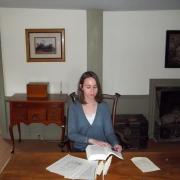
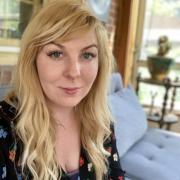
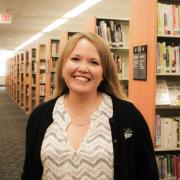
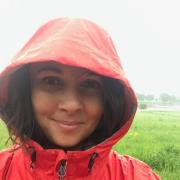
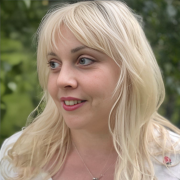
This book is part history, part science, and part character study. It is heartbreaking and hopeful at the same time. -Tom